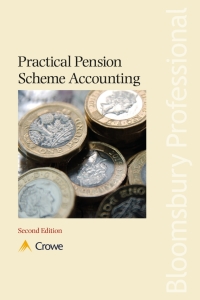Directions: Complete each of the following statements by writing in the Answers column the letter of the word or words that correctly completes each statement. (3 points each) For Scoring Answers 1. To sign the back of a check with the name of the company and "Pay to any bank" is an example of a (A) signature card; (B) blank endorsement; (C) restrictive endorsement; (D) canceled check; (E) liability. 2. A check involves three parties. The bank in which the drawer has money on deposit is called the (A) payer; (B) drawer, (C) payee; (D) drawee; (E) endorser. 3. On a bank reconciliation, deposits that were not entered by the bank before the bank statement was prepared are known as (A) NSF deposits; (B) deposits in transit; (C) outstanding deposits; (b) postdated deposits: (E) payables. 4. A supply of currency and coin kept in a cash drawer for use in handling sales transactions is called (A) u petty cash fund; (B) a change fund; (C) cash short and over; (D) any of these; (E) none of these. 5. In reconciling the bank statement, it was noted a check written for $65 (correct amount) was recorded in the books as $56. On the bank reconciliation, the difference would be (A) added to the checkbook balance; (B) subtracted from the checkbook balance; (C) added to the bank balance; (D) subtracted from the bank balance; (E) removed from the bank account 6. In reconciling a bank statement, an NSF check had not been recorded in the books. The entry to record this transaction would be (A) debit Accounts Payable and credit Cash; (B) debit Cash and credit Accounts Payable; (C) debit Cash and credit Accounts Receivable; (D) debit Accounts Receivable and credit Cash; (E) debit an expense account and credit Cash. 7. Electronic funds transfer (EFT) systems use which of the following to complete a transaction with the bank? (A) a computer, (B) a paper check; (C) currency: (D) a draft; (E) any of these. 8. Which of the following is not a common reason for differences between the book and the bank cash balances? (A) errors by the depositor, (B) service charges; (C) deposits in transit; (D) outstanding chocks; (E) errors in billing customers. 9. When the Cash Short and Over account has a credit balance at the end of the month, it is considered (A) an expense; (B) a revenue; (C) an asset; (D) a liability; (E) owner's equity. 10. Cash receipts from the cash register tapes totaled $897. The cash count indicated that $927 is in the cash drawer. There is a change fund of $100. The entry to record the difference would be (A) debit Cash for $30 and credit Cash Short and Over for $30; (B) debit Cash Short and Over for $30 and credit Cash for $30: (C) debit Cash for $70 and credit Cash Short and Over for $70; (D) debit Cash Short and Over for $70 and credit Cash for $70; (E) none of these







